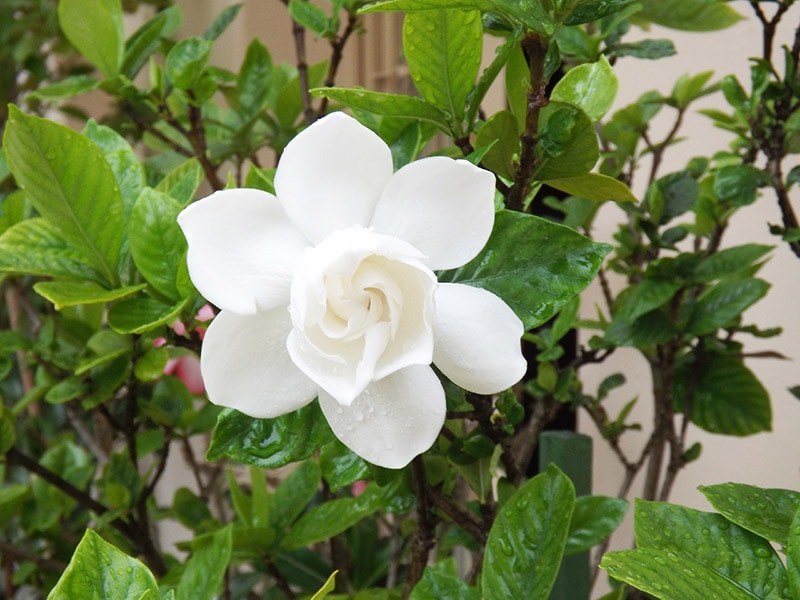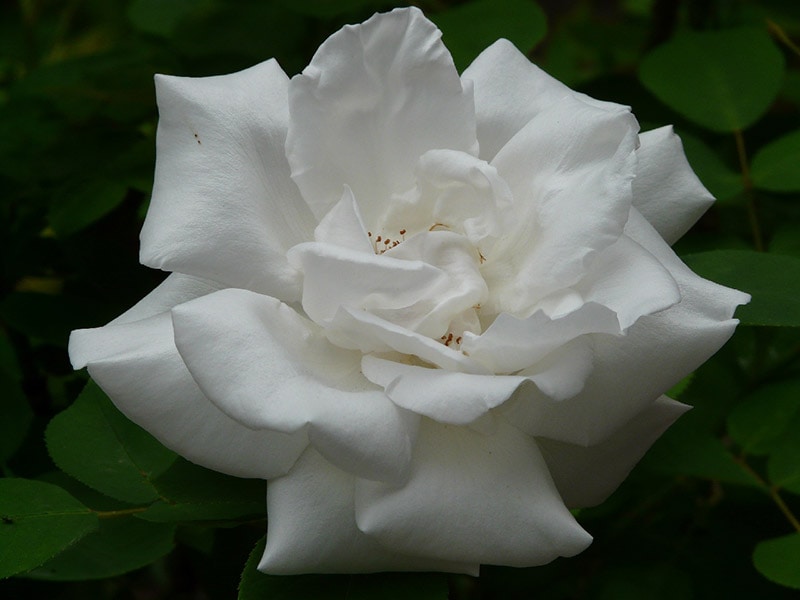10 Types of Gardenias to Grow at Home (With Pictures)
-
Jana Blagojevic
- Last updated:

Gardenias are a perfect solution if you want a stunning addition to liven up your backyard with colorful and gentle flowers. These plants come in several varieties, each offering a unique feature different from the others. What makes the plants unique is the fragrance of the flowers and the soft petals.
In the article below, you can find all the necessary information about the most popular gardenia variety. Make sure to read until the end to find out which type suits you and your garden best.
The 10 Types of Gardenias to Grow at Home
1. August Beauty Gardenia
| Average height: | Up to 6 feet tall |
| USDA Hardiness: | Zone 7 |
August Beauty is the most popular type of gardenia and is widespread. It is a large shrub-like plant with dark green and somewhat fragrant foliage. It grows lovely white double flowers, as large as 3 inches. They bloom at the beginning of summer and continue appearing sporadically throughout fall. They thrive in moist soil that is slightly acidic and rich. This variety adores plenty of natural sunlight, although they appreciate partial shade, which shields the leaves from burning and prevents buds from falling off.
2. Aimee Gardenia
| Average height: | 4 to 6 feet tall |
| USDA Hardiness: | Zones 8 to 12 |
This gardenia variety, also known as Cape Jasmine, is a large evergreen shrub with stunning dark green foliage and gentle, fragrant white flowers. It usually blooms from late spring up until early summer. The Aimee variety is an accent shrub for decorating containers or hanging baskets.
3. Kleim’s Hardy Gardenia
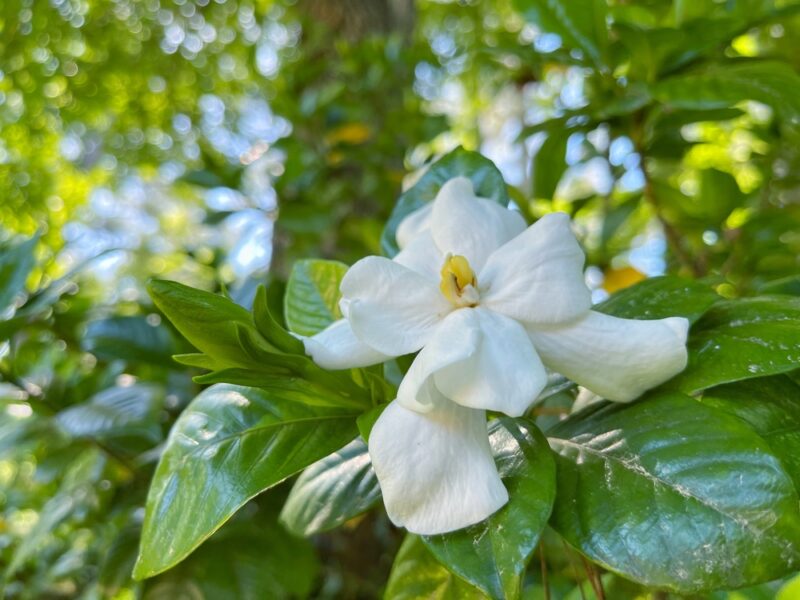
| Average height: | 2 to 3 feet tall |
| USDA Hardiness: | Zones 7 to 11 |
The Klem’s Hardy is a small evergreen shrub that blooms from late spring to early fall. The blooms have a lovely ivory white color, with gentle, fragrant star-like petals and dark foliage. This plant is usually placed near patios and entryways with high traffic since it carries a charming look and a sweet fragrance.
4. Radicans Gardenia
| Average height: | 1 to 2 feet tall |
| USDA Hardiness: | Zones 8 to 11 |
The Radicans gardenia is a miniature variety that grows as a bush only up to 12 inches. It has deep green foliage that grows tiny double flowers, usually appearing in gentle white shades. This gardenia variety is ideal for borders, garden beds, and containers, as it has horizontal branching.
5. Fortuniana Gardenia

| Average height: | 6 to 8 feet tall |
| USDA Hardiness: | Zones 8 to 11 |
Fortuniana is another large shrub-like variety of gardenias, blooming from mid-spring to mid-summer. The foliage is deep green with pure white, fragrant flowers resembling camellia. This lovely specimen of gardenia is primarily used in landscaping for garden edges and can also be excellent for stunning corsages. It prefers direct sunlight or partial shade and moist but well-drained soil.
6. Pinwheel Gardenia
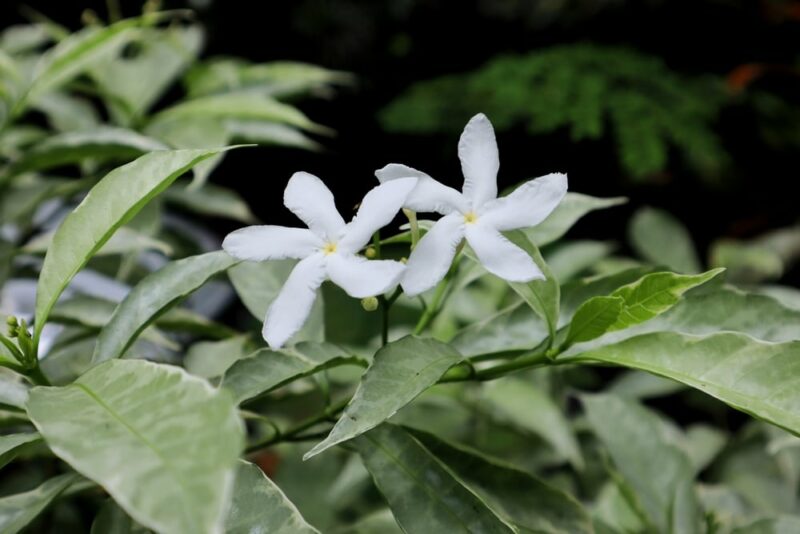
| Average height: | 4 to 8 feet tall |
| USDA Hardiness: | Zones 6 to 11 |
The Pinwheel gardenia is a medium-sized species that grows single, white flowers. The flowers bloom from late spring to summer and have a lovely fragrance. It thrives in full sunlight or partial shade and prefers well-drained acidic soil. This gardenia is excellent for smaller gardens, garden beds, and containers.
7. Tahitian Gardenia
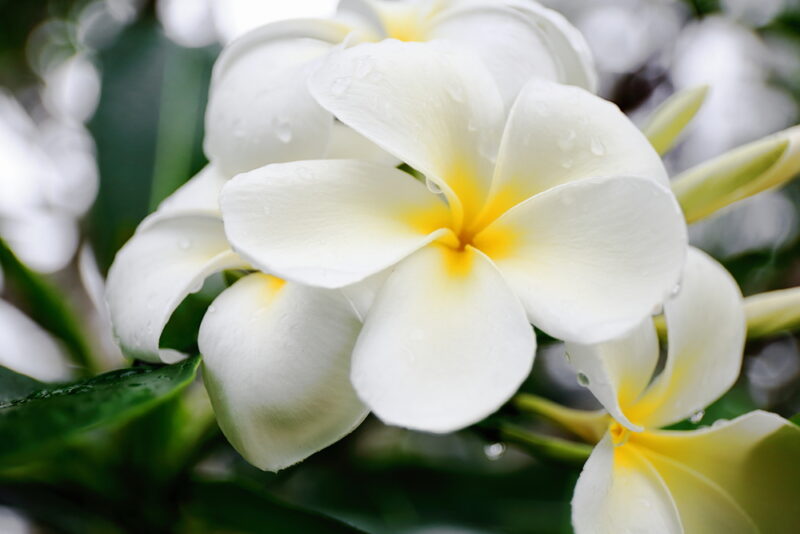
| Average height: | Up to 10 feet tall |
| USDA Hardiness: | Zones 9 to 11 |
The Tahitian gardenia originated from Western Polynesia and got its name from being discovered in Tahiti. This perennial shrub blooms during spring and summer and can grow up to 10 feet tall in ideal conditions. The leaves are dark and glossy, creating a stunning contrast with the gentle white flowers. Since it carries a charming appearance, it can often be seen in landscapes as a focal point.
8. Thunberg’s Gardenia

| Average height: | 6 15 feet tall |
| USDA Hardiness: | Zones 10 to 12 |
The Thunberg’s gardenia is another fragrant evergreen shrub that enjoys acidic, well-drained soil. If your garden soil is moist and clay-like, it’s best to plant the gardenia in a raised bed or hanging container. The Thundberg is mainly grown as an indoor plant, so providing it with ample natural sunlight and a moderate room temperature is crucial. During summer, you can take out your Thunberg’s gardenia outside, but you must take it indoors as soon as temperatures drop.
9. Hawaiian Gardenia
| Average height: | Up to 6 feet tall |
| USDA Hardiness: | Zones 7 to 11 |
The Hawaiian Gardenia is a gorgeous small tree or large shrub that blooms from October to December, while some plants bloom in spring. It develops lovely white flowers that carry a fragrant smell. The flowers grow between 1 and 1.5 inches in diameter, and the leaves are up to 4 inches long. The plant’s fruits are hard and green with a fleshy inside.
10. Crown Jewel Gardenia
| Average height: | 2 to 3 feet tall |
| USDA Hardiness: | Zone 6 |
The Crown Jewel gardenia is a perfect variety for growing in containers because of its unique spreading habits. This gardenia is an excellent cold-hardy variety, growing double flowers up to 3 inches in diameter. They repeatedly bloom throughout the season, from spring to fall, increasing their bloom after light pruning.
Final Thoughts
Gardenias are lovely, charming plants that can make any garden bed or basket seem more magical and colorful. Their colors vary from bright purple to creamy white, and the flowers usually carry a pleasant fragrance. There are numerous gardenias, although the most popular varieties are listed in the text above. Hopefully, after reading this article, you will be able to distinguish each variety by its unique features and characteristics.
Featured Image Credit: ignartonosbg, Pixabay
Contents

